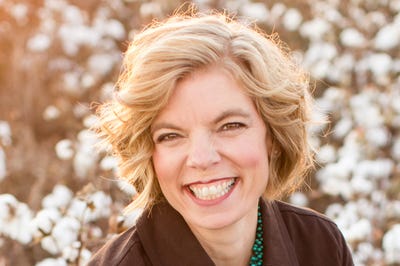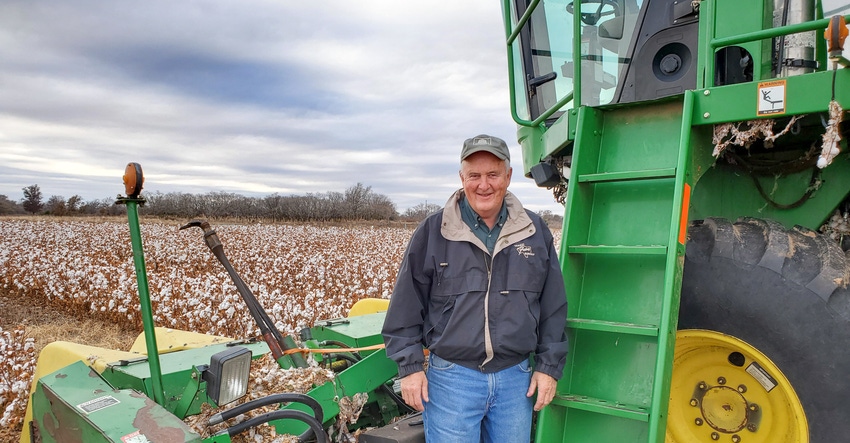
In the sandy loam soils near Shamrock, Texas, grower John McDowell says when it comes to seed selection, yield potential is his priority. Much of the area's short tenure in cotton production hasn't created a need for varieties stacked with disease and insect resistance but pigweed has made dicamba the perfect fit for his cotton.
"We hardly have disease or insect issues," McDowell says. "I love the dicamba trait. We'll see how long it lasts."
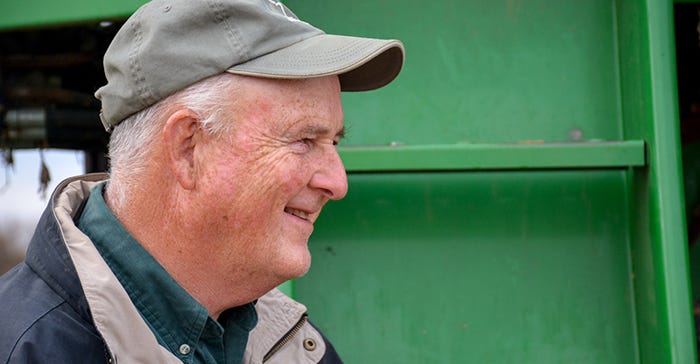
Along with cotton, McDowell also grows corn with his two brothers Mark and Pat. To combat weeds on their corn ground, the brothers apply Acuron. "Just one shot, and you're done. It's done a perfect job for the last two years."
Irrigation in the Shamrock area is, as McDowell describes, "hit or miss." The brothers drilled their first well in 1993. "We started hunting water. We drilled 20 test holes, and it wasn't until something like number 19 when we finally found water."
SKIP ROW
Limited irrigation and 18 to 19 inches of annual rainfall has prompted McDowell to transition his irrigated acres to a skip-row pattern. "Our cotton is planted in a two in, one out skip-row pattern, which allows a nozzle to be dropped between the pair of twin rows. All of the pivots are nozzled for two gallons per minute of water or 240 gallons per minute for a 120-acre circle."
The skip-row system also allows him more production acres. "We can grow 80 acres instead of just growing half a circle."
The irrigation hoses are spaced 10-feet apart rather than five. He even ties two hoses together, so they'll drag in the right spot, he adds. It takes about a week to irrigate the circle.
For 2019, McDowell’s yield goal on his irrigated cotton with two gallons per minute of water was 250 bales per circle. "Two of the six circles reached this goal and the rest were very close," he adds.
But increased irrigation efficiency isn't the only benefit to his new system. "It drops my insurance and seed cost by a third."
FERTILIZER PLACEMENT
One of the challenges with his new system is fertilizer placement. "We've got to put a lot of fertilizer on this ground. It doesn't have much to it — it's an old sand hill," he says.
To resolve the issue, the McDowell brothers designed a fertilizer toolbar with three fertilizer spreaders that they pull through the field at the same time. They had to travel to Mississippi to find trailers with a seven-inch chain. "Most of the ones at the coop have 9-inch to 11. So, we found small ones that don't put out as much fertilizer."
See photo gallery, Texas grower fences his cotton, switches to skip-row planting
The McDowell's built a box around each spinner. As the fertilizer spreader goes through the field, fertilizer is dropped straight down on the crop, covering 60 inches or two rows. "We're putting all of the fertilizer where the crop is growing instead of out in the middle. I think that's what has made the difference."
McDowell says he hopes to cut the fertilizer rate from 280 pounds to 250 pounds per acre.
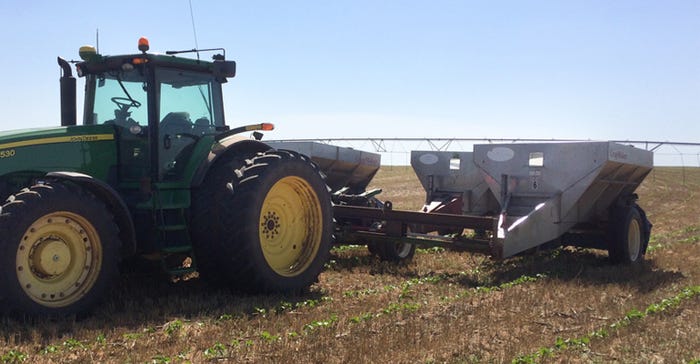
To increase efficiency, the McDowell's have a big tender which enables the coop to deliver a semi load of fertilizer, filling the three trailers along with the tender. "It's more efficient for the coop, and it's good for us. And we don't have to wait on a truck."
For 2020, the brothers are considering adding hydraulic cutoffs to their invention. "The biggest challenge is it only covers a 30-foot pass, which is pretty small nowadays, but it's worth it."
CATTLE
Cattle, along with wheat and rye hay production, also play a significant role in the McDowell farm and ranch operation. While the grains not only produce feed for their cattle, they also provide cover for their crops.
"We always grow a wheat crop on here and cut it for hay," says McDowell. "That's where we get our good cover. We had a wet spring. This field made almost five big round bales an acre dry land."
A HINDERANCE
Also in abundance but a hindrance to crop production on the McDowell farm is deer. Their farms are a mile to three miles from the North Branch of the Red River.
"We have a quarter over there that is dryland and the deer ate it to the ground," he says.
To remedy the issue, the McDowell's are fencing their farms — a project they began eight years ago. "We're building our 17th mile right now. Before we put up these fences, you could come out here in the evening and see more than 200 deer on this circle."
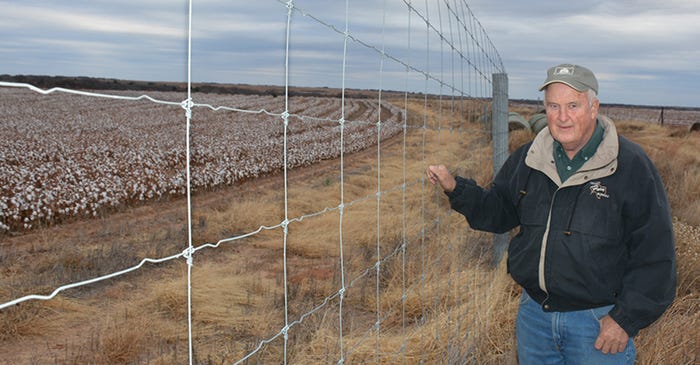
To save money, the brothers use their old irrigation pipes rather than cedar posts and t-posts in between to construct the 8-foot high fences. The steel posts and net wire cost about $1.50 per foot, he says. "We've got 11 pivots fenced and we're starting on the dryland."
With a single gate in which to enter and exit a field, the fencing creates production challenges. In 2019, hauling out 500 to 600 bales of hay slowed cotton planting. "It calls for an 'all hands-on deck' effort," McDowell says. Once the hay is removed, the cotton is no-tilled into the wheat straw.
"We like to plant the wheat back without plowing. On this sandy ground, we've got to keep a cover on it. Spreading the wheat cover worked but this year we'll use an interrow cover crop seeder to plant the wheat."
46TH SEASON
McDowell is starting his 46th year of farming. He began his career as a senior in high school. "I love farming. I'm one of those people who knew their whole life what they wanted to do. It's just always been my goal."
But he's the first to admit he hasn't done it alone. "Most brothers can’t work together, but we've been doing it for more than 40 years. We all have great spouses and areas of the operation we oversee, but when help is needed, we all come running."
While McDowell admits he's getting older, he says there's still a lot he'd like to do. "I'm running out of life. I still want to improve the ranch fences and things like that." But he's also encouraged about future generations. "The fifth generation moved back in 2018 and it’s great seeing the ranch stay in the family."
About the Author(s)
You May Also Like


